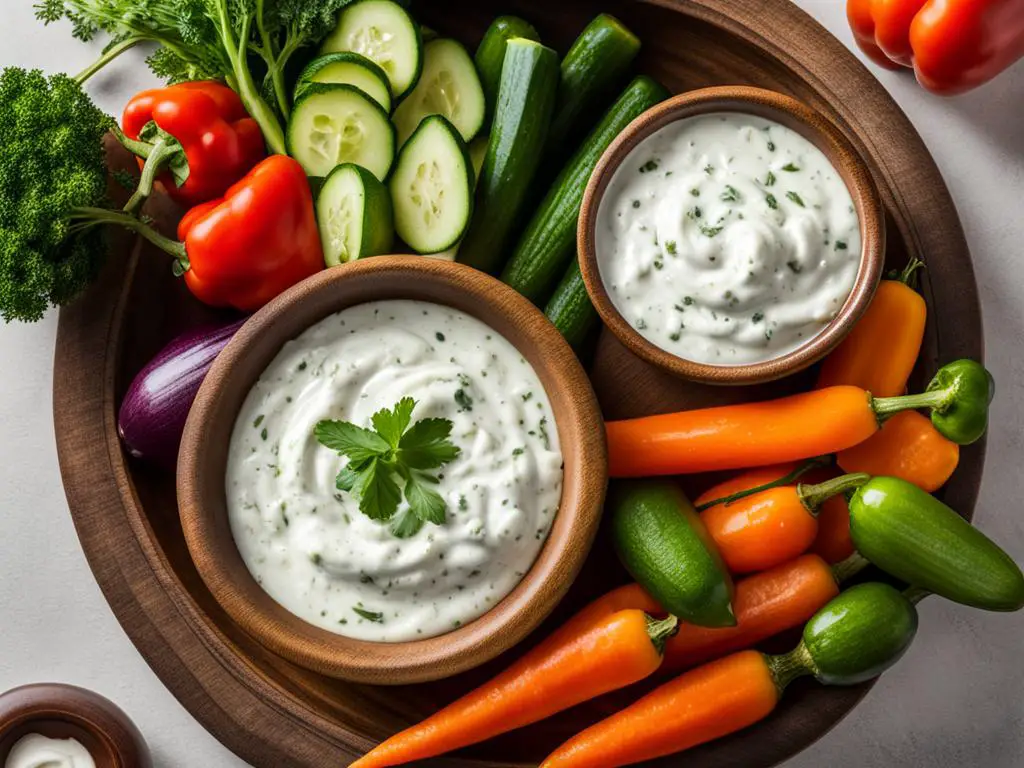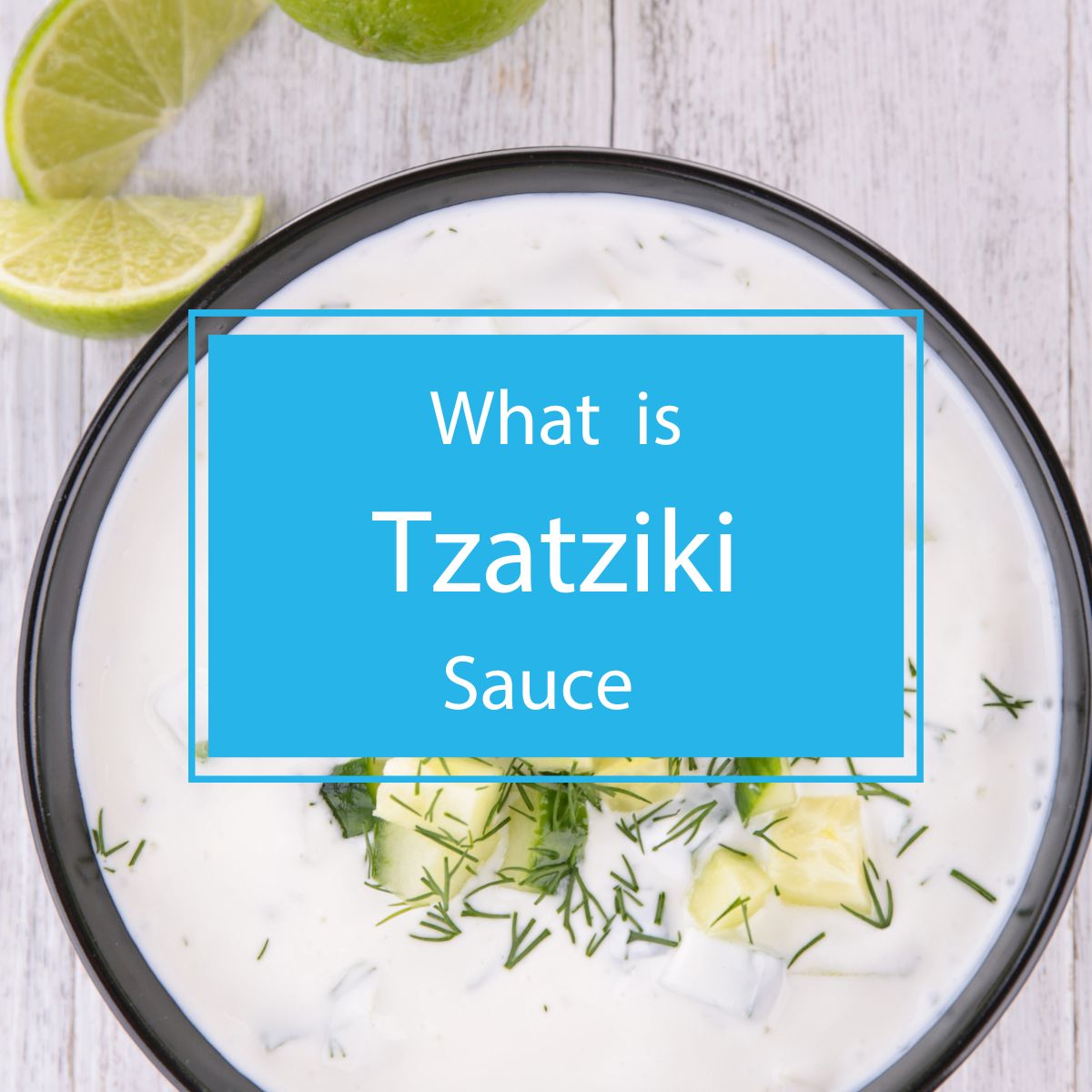What is tzatziki sauce, and what makes it such a beloved addition to countless dishes around the world? This creamy, tangy sauce hails from the heart of the Mediterranean and is celebrated for its simple, fresh ingredients.
With its unique blend of yogurt, cucumbers, and herbs, tzatziki is a testament to the power of combining basic components to create something extraordinary.
In this article, we’ll look into the story of tzatziki and learn how to make and use this delightful sauce in your own kitchen. So keep reading to unlock all its secrets!
What is Tzatziki Sauce?
Tzatziki is a classic Greek sauce known for its refreshing combination of yogurt and cucumber, enhanced with garlic and fresh herbs. This creamy, tangy sauce is a staple in Mediterranean cuisine and is cherished for its ability to complement a variety of dishes. From gyros and grilled kebabs to falafel bowls and Greek salads, tzatziki adds a delightful touch to both traditional and modern recipes.
Tzatziki’s origins trace back to the Ottoman Empire, evolving through the centuries into the popular condiment enjoyed worldwide today.
Typically served cold, it’s a common appetizer or meze in Greek households, offering a taste of Mediterranean culinary tradition. Its versatility and delicious flavor make tzatziki an essential component of Greek dining, beloved in restaurants and homes alike.
The Essential Ingredients of Tzatziki Sauce
The secret to a perfect tzatziki sauce lies in a harmonious combination of ingredients selected with precision and care. Find below a list of essential ingredients and their role in the crafting of this beloved Greek dip:
- English cucumber – provides a seedless, sweet crunch and refreshing taste.
- Greek yogurt – forms a creamy and thick base.
- Garlic – adds a zesty kick to the mix.
- White vinegar – contributes a bright tang, balancing the flavors.
In addition to the core ingredients, you can elevate your tzatziki sauce further by including the following:
- Kosher salt – enhances the taste without overpowering the flavors.
- Ground pepper – lends a touch of warmth and spice.
- Fresh herbs – such as dill or mint, provide an extra burst of taste and aroma.
How to Make Tzatziki Sauce
Creating the perfect tzatziki is a rewarding process when equipped with the right technique. Here’s a straightforward guide to help you make this classic Greek sauce from scratch, ensuring you get great results every time.
Grating and Draining Cucumbers
The key to a flawless tzatziki starts with the way you handle cucumbers. Begin by carefully grating the cucumber, whether manually or with the assistance of a food processor.
Next, focus on minimizing the cucumber water content by draining the excess liquid using a cheesecloth or napkin while applying pressure. This vital step ensures your tzatziki maintains its signature creamy consistency without becoming too watery.
Mixing the Perfect Tzatziki Blend
With the cucumbers prepared, you’re ready to mix your tzatziki. In a bowl, blend minced garlic, a dash of white vinegar, and some olive oil. Add the drained cucumbers to this mix along with Greek yogurt and your choice of herbs, such as dill or mint.
Stir everything gently to combine the flavors. Then, let the mixture chill in the fridge for a bit to allow the ingredients to meld together, enhancing the overall taste.
Serving Suggestions and Pairings
Tzatziki’s versatility makes it a go-to for countless dishes. Serve it chilled as a refreshing dip with fresh vegetables and pita bread, use it as a condiment for gyros, or include it in a mezze platter. It also goes well with baked potatoes, grilled meats, and fish. Feel free to get creative and use tzatziki in dinner bowls alongside Mediterranean staples like keftedes (Greek meatballs) or in salads.
Tzatziki Variations: Regional Twists and Adaptations
While tzatziki has its roots in Greek cuisine, it has inspired a variety of regional adaptations that reflect local tastes and ingredients. Such variants only highlight the rich diversity and adaptability of this refreshing sauce across cultures and taste preferences.
Here are a few noteworthy regional Greek tzatziki adaptations which showcase the sauce’s versatility:

- Talatouri: A Cypriot variant that replaces white vinegar with lemon juice and often adds fresh mint for a zesty touch.
- Cacık: A Turkish version that uses diluted yogurt, grated cucumbers, and often fresh mint and dill.
- Mast-o-Khiar: An Iranian take on this yogurt and cucumber sauce, with the addition of raisins, seeds, and sometimes walnuts.
These delightful adaptations showcase the endless potential of tzatziki, allowing you to experiment with diverse flavors and discover new favorites. Ultimately, whether you’re a fan of the classic Greek tzatziki or eager to explore its countless variations, this sauce is the epitome of Mediterranean culinary art and deserves a place on every food lover’s table.
The Versatility of Tzatziki: More Than Just a Dip
While many might regard tzatziki as just another dip for appetizers, this Mediterranean delight goes far beyond. With a myriad of uses, tzatziki has become an indispensable part of mezze platters, main courses, and even Mediterranean-inspired recipes that extend the borders of traditional Greek cuisine.

- Mezze Platter Companion: Tzatziki serves as a creamy, tangy complement to warm pita, fresh vegetables, and crispy falafel on a mezze platter.
- Mediterranean Main Courses: It pairs wonderfully with dishes like groundnut beef skewers, grilled meats, and zesty Greek salads, enhancing flavors with its cool, soothing taste.
- Creative Kitchen Experiments: Adventurous cooks can use tzatziki as a spread in sandwiches, a binder in burger patties, or even as a topping for savory crepes like the Nepali Rice Flour Crepe and Ukranian Cheese Crepes.
Here are a few more ways to enjoy tzatziki:
- Bread and Crudités: Serve tzatziki with fresh, warm pita bread or an assortment of crunchy vegetables like carrots, cucumber, and bell peppers for the ultimate dipping experience.
- Gyros: Slather a generous portion of tzatziki onto your gyro wrap for an authentic and refreshing taste.
- Grilled meat and seafood: Elevate the flavors of grilled chicken, beef, lamb, or fish with a dollop of tzatziki on the side.
- Rice and salads: Mix tzatziki into rice dishes or incorporate it into a cucumber salad for a burst of tangy freshness.
- Burgers and sandwiches: Replace traditional mayonnaise or ketchup with tzatziki for a Mediterranean twist.
Whether you’re topping a pizza with tzatziki or whipping up a tzatziki-infused salad dressing, this versatile sauce is sure to delight your palate. Explore its many uses and bring a touch of Greek cuisine to your kitchen.
Keeping Tzatziki Fresh: Storage Tips and Shelf Life
Proper storage is key to enjoying tzatziki at its best, ensuring the sauce retains its authentic Mediterranean flavor. Here’s how to store tzatziki to maximize its freshness and extend its shelf life:
- Choose the Right Container: Opt for a glass container with an airtight lid. Glass is preferable to plastic as it doesn’t absorb odors and is non-reactive, helping to maintain the delicate flavors of your tzatziki.
- Store Correctly: After transferring your tzatziki into the glass container, make sure it’s sealed tightly. Place it in the refrigerator, avoiding the door where temperatures fluctuate. The middle shelf is ideal for keeping a consistent cool temperature that is crucial for preserving your tzatziki.
- Enjoy While Fresh: Tzatziki is best enjoyed within 2 to 4 days of making it, as this is when its flavors are most vibrant. If you notice any liquid separation, simply stir the tzatziki gently to reintegrate the ingredients and restore its creamy texture.
By following these tips, you can ensure your tzatziki stays fresh and delicious, capturing the essence of Mediterranean cuisine with every bite.
Health Benefits of Tzatziki Sauce
As a delicious and refreshing addition to your meals, tzatziki sauce offers more than just great taste—it provides an array of health benefits that align with the heart-healthy Mediterranean diet. From being low in calories to a valuable source of nutrients, tzatziki sauce is a delicious way to enhance your dishes without guilt.

One essential component of tzatziki is Greek yogurt, a nutrient-rich ingredient that contributes significantly to the sauce’s nutritional content. Greek yogurt is packed with protein, calcium, and probiotics, which can boost your immune system and promote gut health.
Additionally, the fresh ingredients used in tzatziki sauce contribute a variety of vitamins and minerals. Here’s a brief overview of the nutritional profile of tzatziki sauce to highlight its health benefits:
| Nutrient | Benefit |
|---|---|
| Protein | Supports muscle growth and repair |
| Calcium | Promotes strong bones and teeth |
| Vitamin A | Essential for healthy vision, immune function, and cell growth |
| Vitamin C | Boosts immune system and aids in the absorption of iron |
| Vitamin K | Supports blood clotting and bone health |
| Folate (B9) | Helps with cell growth and proper brain function |
| Potassium | Maintains fluid balance and supports proper muscle and nerve function |
As you can see, tzatziki sauce has a comprehensive nutritional profile full of health advantages. So, next time you whip up a batch of this sumptuous Greek sauce, take pride in knowing that you’re serving up a delightful treat that not only pleases the palate but also fuels the body.
Conclusion
Tzatziki is much more than a delicious sauce; it carries a rich legacy of Greek culinary traditions, bursting with the refreshing flavors of the Mediterranean. By learning what tzatziki is, mastering its preparation, and discovering its many uses, you’ve tapped into the essence of this beloved sauce.
As you incorporate tzatziki into your dishes, you’ll find it transforms everyday meals into vibrant culinary adventures. Enjoy the fresh, garlicky taste of tzatziki and embrace the authentic Greek experience it brings to your table. Every spoonful is not just a treat for the taste buds but a celebration of a rich, cultural heritage.
FAQ
Can tzatziki sauce be made with low-fat yogurt?
Yes, you can use low-fat Greek yogurt to make tzatziki if you’re looking for a lighter version.
Is tzatziki sauce gluten-free?
Yes, tzatziki is naturally gluten-free, making it a great option for those with gluten sensitivities.
Can tzatziki sauce be frozen for later use?
Freezing is not recommended as it can affect the texture and consistency of the yogurt and cucumbers.
How can I make tzatziki sauce vegan?
For a vegan version, substitute Greek yogurt with plant-based yogurt such as coconut yogurt or cashew yogurt.




